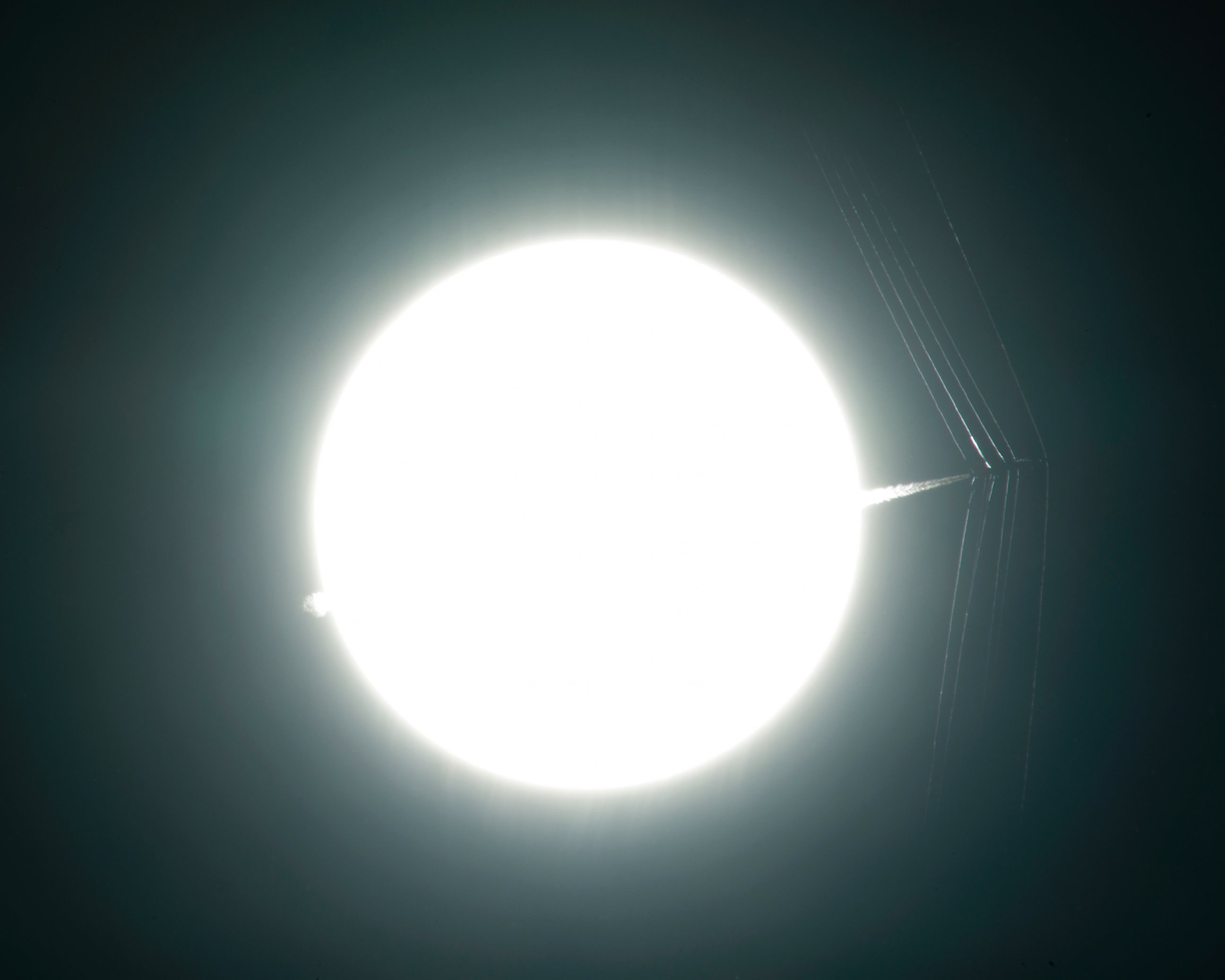Stunning Shock Wave Images Help NASA in Development of 'Quiet' Supersonic Jet
The QueSST jet will produce a soft thump instead of a sonic boom.
— -- NASA is relying on a century-old imaging technique as the aerospace agency works to develop a next-generation supersonic jet that can break the sound barrier with a soft "thump" instead of a sonic boom.
A technique called schlieren imagery allows NASA to "visualize supersonic flow phenomena with full-scale aircraft in flight" with the sun as the backdrop for the photos. Seeing shock waves and their density is crucial to the project so engineers can work on a design to minimize those reverberations, according to a NASA blog post explaining the project.
While the Quiet Supersonic Technology (QueSST) research aircraft is being developed, the testing has resulted in stunning images of a supersonic jet flying at Mach 1.05 with the sun in the background.

One image taken from a camera on the ground shows the result of the jet's sonic boom. A second photo using schlieren imagery shows the jet appearing to pierce the sun as it leaves behind a trail of shock waves.
The ultimate goal: NASA says when QueSST is operational, it could "unlock the future to commercial supersonic flight over land," essentially ushering in a new era of aviation that could allow us to get from one place to another faster without the loud roar of the Concorde, which was retired in 2003.




